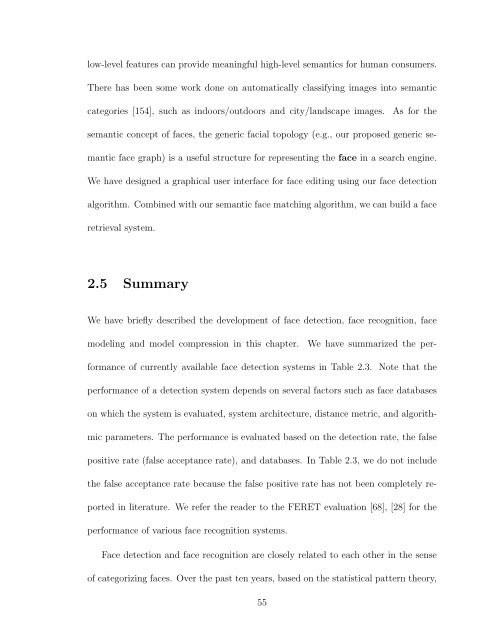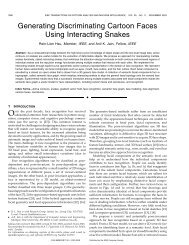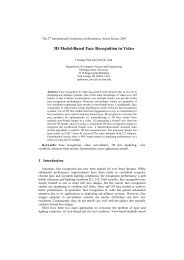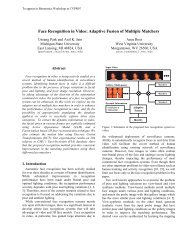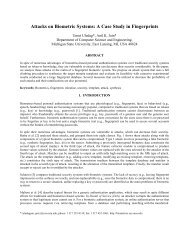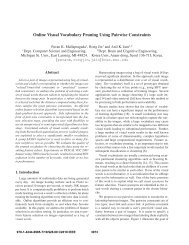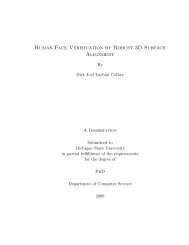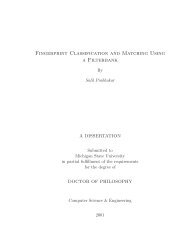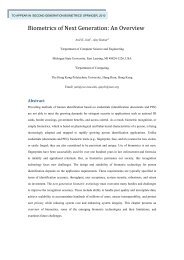Face Detection and Modeling for Recognition - Biometrics Research ...
Face Detection and Modeling for Recognition - Biometrics Research ...
Face Detection and Modeling for Recognition - Biometrics Research ...
You also want an ePaper? Increase the reach of your titles
YUMPU automatically turns print PDFs into web optimized ePapers that Google loves.
low-level features can provide meaningful high-level semantics <strong>for</strong> human consumers.<br />
There has been some work done on automatically classifying images into semantic<br />
categories [154], such as indoors/outdoors <strong>and</strong> city/l<strong>and</strong>scape images.<br />
As <strong>for</strong> the<br />
semantic concept of faces, the generic facial topology (e.g., our proposed generic semantic<br />
face graph) is a useful structure <strong>for</strong> representing the face in a search engine.<br />
We have designed a graphical user interface <strong>for</strong> face editing using our face detection<br />
algorithm. Combined with our semantic face matching algorithm, we can build a face<br />
retrieval system.<br />
2.5 Summary<br />
We have briefly described the development of face detection, face recognition, face<br />
modeling <strong>and</strong> model compression in this chapter.<br />
We have summarized the per<strong>for</strong>mance<br />
of currently available face detection systems in Table 2.3. Note that the<br />
per<strong>for</strong>mance of a detection system depends on several factors such as face databases<br />
on which the system is evaluated, system architecture, distance metric, <strong>and</strong> algorithmic<br />
parameters. The per<strong>for</strong>mance is evaluated based on the detection rate, the false<br />
positive rate (false acceptance rate), <strong>and</strong> databases. In Table 2.3, we do not include<br />
the false acceptance rate because the false positive rate has not been completely reported<br />
in literature. We refer the reader to the FERET evaluation [68], [28] <strong>for</strong> the<br />
per<strong>for</strong>mance of various face recognition systems.<br />
<strong>Face</strong> detection <strong>and</strong> face recognition are closely related to each other in the sense<br />
of categorizing faces. Over the past ten years, based on the statistical pattern theory,<br />
55


